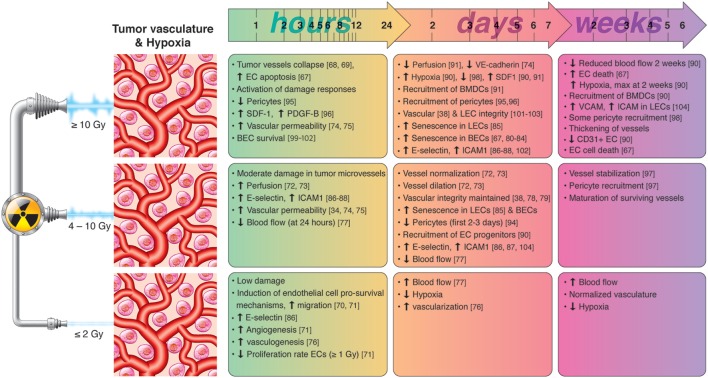Figure 2.
Chronological effects observed on tumor vasculature and hypoxia after RT delivered at different dose per fraction. The figure is a compilation of observations registered in different experimental models, comprising cell cultures (in vitro), animal (mainly mice) models, and clinical observations, on effects of RT given at different dose/fraction. Radiation schemes range from single fractions to oligo (daily) fractions and prolonged multifractionated regimens. The vast majority of preclinical observations comprise RT regimens of one or few fractions irrespective of the radiation dose. In clinical settings, RT protocols comprising moderate or high doses are always applied in one or few fractions. Although some inconsistencies may exist between studies, it is generally observed that small doses in few fractions promotes endothelial cell (EC) survival and increased intratumoral blood flow, whereas high-dose RT induces EC apoptosis, hypoxia-response elements and the recruitment of EC progenitors during the first days post-RT. Medium radiation doses, given in one or few fractions, induce moderate damage in tumor blood vessels, promotes the dilation and normalization of existing vessels, pericyte recruitment, and the expression of cell adhesion molecules. Lymphatic endothelial cells (LECs) are more radioresistant than blood vessels but may enter into premature senescence already after moderate radiation doses.

